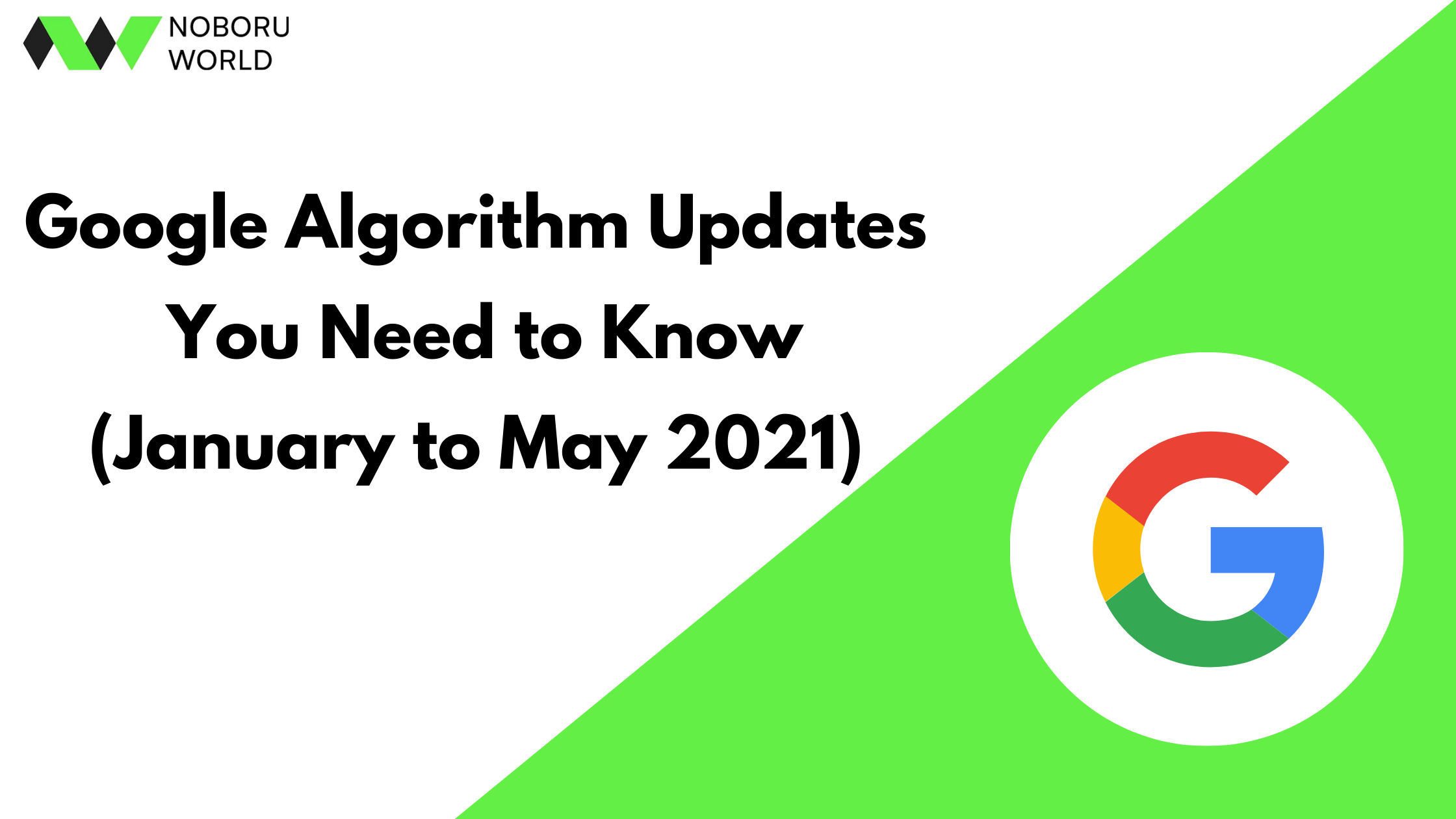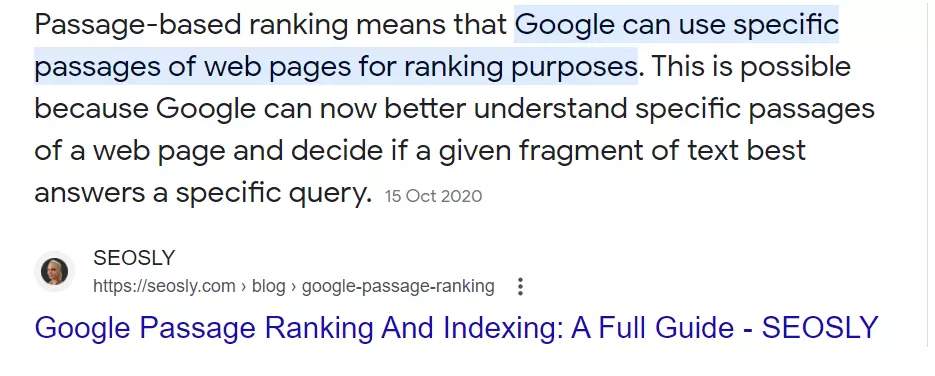Google Algorithm Updates You Need to Know (January to May 2021)

By constantly updating its algorithm, Google ensures the best possible results for each user based on their interest over time. However, while it may be great for users, businesses need to climb to the top of the page to pique users’ interest. The goal of Google is to provide all information in one click, and they are well on their way to achieving this.
Suppose you’re a webmaster, an online business owner, or a digital marketer. In that case, you need to be aware of what algorithm modifications take place overtime to ensure that your website doesn’t suffer. Even though the consequences are unavoidable, you might still strive to determine why.
Google said in November that another core update had been issued, as it does multiple times a year. Google’s fundamental instruction for webmasters, as with prior core modifications in recent years, may be found in this article, “What Site Owners Should Know About Core Updates.” This article describes how Google analyses the content quality and E-A-T, which substantially impact website performance during core updates.
Why Should You Be Bothered With Google Algorithms?
Algorithmic updates are never-ending as there will always be some changes that you can make to give much more refined results. The same goes with Google algorithms; though minor algorithmic changes can happen weekly, they don’t affect your website in significant ways.
Although the bigger shark in the ocean is what you should be wary of, major Google algorithm updates can shake your rankings and give you sleepless nights.
In this article, let us look at the important updates from January to May 2021, understand a summary of the major points from each of them and analyse what they represent for search marketing in 2022.
The complete list of 2021 Google algorithm update 2021 from January to May.
With all that’s been released this year, let’s look at each of these updates and how they affected search results this year.
Deep Diving Into Google Algorithm Update 2021
Passage Indexing Update
When it began – On 10th February 2021, the first algorithm update of 2021 was released, named passage indexing. It started ranking passages from the articles for particular search queries that are usually not directly comprehensible at a macro level.
The Impact: The change had little impact on ranking positions, and it was more of an introduction of a new feature than the type of algorithm update we’re used to seeing from Google. Google said that it would affect roughly 7% of total search queries.
Here’s what Google has to say on this:
Nonetheless, the new feature alters Google’s algorithm indexes and ranks material.
Passage ranking is an AI-powered upgrade meant to assist Google in returning the best results for “very specialized” searches. The update essentially allows Google to rank a section that precisely addresses the user’s search query, even if the page overall is not optimized for that particular term.

For example, if you have an in-depth blog article covering a broad topic, such as buying a life insurance policy, your target keywords for which you’ve optimized the page would contain keywords such as “buy a life insurance plan,” “how to buy life insurance policy,” and “types of life insurance.”
Your page title, headings, and the content will be optimized for keywords like this. Still, your guide may also include a section on ‘what to look for in a life insurance plan,’ which will target specific queries like ‘life insurance illness coverage.’ Thus, Google will rank your passage similarly to featured snippets, which provide information to users for search terms like these.
Suggestive tip: Try to have long-form content on your website like explainer videos, guidebooks, and ‘all you need to know’ type blogs targeting long-tail keywords and having structured content that will help GoogleBot scrape the page efficiently. It will help you rank for low search volume high intent search terms.
“About this result” feature update (Feb 2021)
When it began – After the Passage indexing update in early February, Google rolled out the ‘about this result’ feature update later in the month, providing additional information about ranking domains like when this page indexed, relevancy to your search term, and language and area served.
The Impact: A user can decide whether a site is trustworthy or not by learning about it before opening the results. It would significantly help users find authoritative and trustworthy but unpopular websites. If you do not have a secure site, you might see a drop in traffic on your pages.
Suggestive tip: Though this feature update doesn’t impact your rankings, Google is trying to give context to users about your website. Thus, you can do the following steps to comply with this feature update:
- Try to be an authoritative website in nature.
- Have an HTTPS protocol website.
- Optimize your content with relevant terms and give in-depth content to answer user queries.
- Have an optimized backlink profile with high DR sites and run regular backlink audits to filter out spammy domains linking to your site.
Product reviews update (April 2021)
When it began – Released in April, the main objective of this update is to provide results that are not only ‘over the top’ reviews but provide in-depth analysis with comparison to provide an insightful opinion for the same.
The Impact: Based on Google’s E-A-T guidelines, the affiliate product review content intends to encourage users to buy the product that has come under the scanner. The affiliate publishers’ sites have been impacted the most, where this exercise was followed mainly to create a buzz and gain authority over the same.
For example, website X does affiliate activity for mobiles. Only reviewing and serving particular brands will rank lower than a broad site Y, which provides in-depth reviews of many competitors and buy now links.
To add to it, Google says, “The overall focus is on providing users with content that provides insightful analysis and original research, and is written by experts or enthusiasts who know the topic well.”
If you want to rank your review content on SERP, here’s the checklist:
- Have buying guides, comparison tables, and other vital information to help users decide.
- Expert comments and their honest review without any bias.
- Actual high-quality images of the product and how to use the product apart from what manufacturers say.
- Add qualitative and quantitative comparison with other products of similar niche.
- Consider adding similar competition products to give a holistic idea.
- Provide benefits and weak points of the product.
- Add buying links of the product on different platforms.
In a nutshell, Google wants to show content that is not biased or paid in nature to users who are genuinely looking for product reviews before buying and comparison with other similar products to make an informative decision.
Google MUM update (May 2021)
When it began – Google released its MUM (Multitask Unified Model) algorithm; the approach is to provide more precise search results for queries. MUM uses AI technology to give search results that better address a user’s intent and behaviors, eliminating the need for users to type several queries to get to the search results they require.
What is it? – When MUM was launched in May 2021 at the Google I/O event, it revealed three significant elements that would transform the search landscape: ‘Things to Know,’ ‘Topic Zooming,’ and ‘Visual Search’ available. Here’s how you can understand these terms in a better way:
- Things to Know – The functionality will provide the logical SERP paths MUM predicts the searcher will take for a particular search query. This feature may allow you to gain insight into a searcher’s thought process when it comes to a product or service. This method provides searchers with access to broad content relevant to their queries. For example, search for weight loss exercises. MUM will also offer results like ‘Zumba training’ or ‘bodyweight exercises at home,’ which are not directly related to the actual search query but follow the same intent for the user.
- Topic Zooming – This feature allows the user to broaden or narrow down the search query to move to the result it wants explicitly. E.g., Users either search for ‘Zumba exercise for weight loss to narrow down the result, or users can search ‘how to lose weight for broader results.
- Visual Search – To give more visual search results, Google provided more photos and videos related to outcomes and expected results. It helped businesses rely on visual search to lead sales (e.g., e-commerce portals).
The Impact: Rankings for the sites with visual content and location-specific information improved. As MUM update also considers websites of other geographies, we can now see foreign websites relevant to your search queries.
Suggestive tip: As the MUM algorithm considers more than just written content, it examines video, images, podcasts, and other non-traditional content while the user searches for the most relevant answers. Thus, your content strategy should include various suitable, high-quality content types to make it more descriptive to cover all aspects of the new search. By doing this, you are not only providing answers to users but also helping them make an informative decision. It won’t help you much if you only provide written information when someone else can better answer the question in a video or another language. Increase the scope of your content to ensure that you cover all aspects of the new search.
Last Words
A lot can happen in a year, and these were just the updates from the first half of 2021! Google is constantly updating its AI-based algorithms with an aim to provide relevant information in a single click. Trust me, there seem to be a lot of roller-coaster rides coming our way in the future! Let’s hop on on this ride, enjoy what comes along and tackle the bumps with new findings and insights.
Stay tuned for our next article which summarises the google algorithm updates from June to December 2021.





We would love to have your opinion.